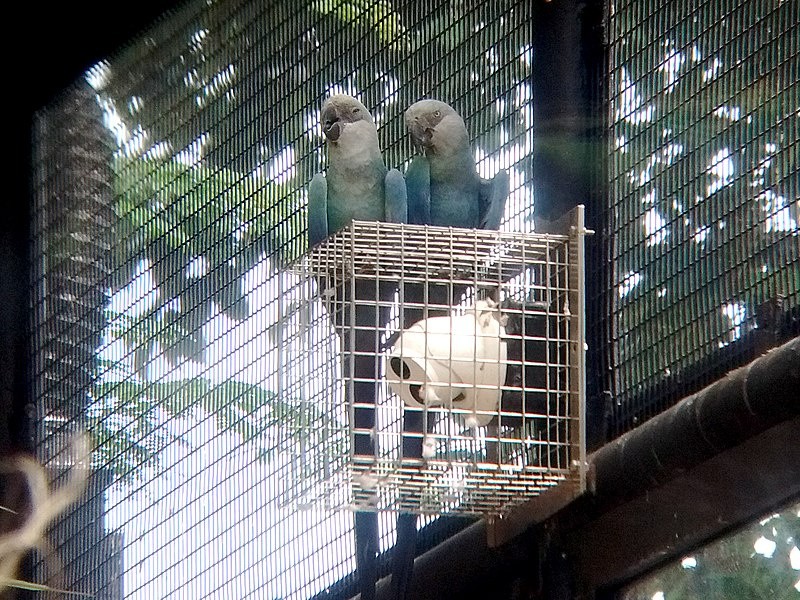
A successful breeding program has rescued a parrot species from the list of extinct species. The birds are now returned to their native home in the forests of Brazil.
Last Birds Standing
The last member of this distinctive parrot species vanished from the wild twenty years ago, leaving only a few dozen birds of the Cyanopsitta spixii in collectors' cages around the world.
The Spix's macaws, with their blue plumage contrasting with their grey heads, have made a stunning comeback, thanks to a remarkable international rescue project.
After being released in Brazil a month ago, a flock of the formerly extinct species now flies freely over its former home.
Conservationists hope to release more birds later this year, and that the parrots will begin breeding in the wild the following spring.
Tom White from the US Fish and Wildlife Service said that the project is going extremely well, and it has been almost a month since the birds were released, and all of them have survived.
White is also a biologist as well as a technical adviser to the rescue project.
He added that because the birds are acting as a flock, everything is going as well as it possibly can. They are staying close to where they were released and are starting to sample local vegetation.
Spix's Macaw
The Spix's macaw, named after German biologist Johann Baptist Ritter von Spix who collected the first specimen in 1819, became a victim of a double environmental whammy that began in the nineteenth century.
As farming spread across South America, goats and other livestock overgrazed the parrot's native habitat, shrubland, and thorn forest known as the Caatinga in northeast Brazil.
The land became severely eroded, and the number of macaws decreased as their habitat was destroyed.
White explained that the loss of numbers had a disastrous secondary effect. Collectors want to own an endangered animal as soon as it becomes available.
That is exactly what happened to Spix's macaw.
As they became scarce, unscrupulous individuals decided to try to capture the few that remained in the wild for their collections.
Awareness and Rio
The species' future appeared bleak until, of all things, an animated film revived its fortunes.
"Rio" is the story of a domesticated male Spix's macaw named Blu who is taken to Rio de Janeiro to mate with a free-spirited female named Jewel.
"Rio" and its sequel, "Rio 2," grossed nearly $1 billion.
Importantly, the films exposed the species' plight to a global audience.
Later, in 2018, Michel Temer, Brazil's then-president, signed a decree establishing a macaw wildlife refuge in the north-eastern state of Bahia, as well as a breeding program utilizing parrots from private collections at various centers around the world.
The Association for the Conservation of Threatened Parrots, based in Germany, was a key player in this collaboration.
Also Read : 5 Animals Recently Declared Extinct
Breeding the Birds
According to White, the increasing sophistication of modern genetics also played an important role in saving Spix's macaw.
White pointed out that inbreeding can be a serious issue when trying to breed animals from a very small surviving population.
However, the techniques used to check the genetic status of these birds were extremely sophisticated, allowing breeders to carefully match birds.
Artificial insemination has also made producing offspring easier for birds.
As a result, hundreds of Spix's macaws have been bred in captivity, and eight of these were transported to Bahia in June for release.
They were not alone: on the same day as the Spix's macaws, eight Illiger's macaws were released.
White claimed that the Spix's macaws we now have are the result of generations of captive breeding, which has dulled some of their instinctive survival skills.
White explained that by combining them with Illiger's macaws, which are simply wild birds brought into captivity for a short time, the Spix benefit from associating with a native species that is sharp and alert, and can show them where they get food and alert them to potential predators.
The birds, which have been fitted with radio transmitters, are now being closely monitored.
If all goes well, White said they will release another 12 Spix's macaws in December, The Guardian reported.
These birds will all be of breeding age. His team has also made certain that there are several nest cavities in the area, both natural and artificial, to encourage the birds to begin mating next year and eventually establish breeding territories in the area.
White concluded his statement by saying that, despite the program's lofty goals, things are going well so far.
Related article : Only One Rare 'Rio' Parrot Left
© 2025 NatureWorldNews.com All rights reserved. Do not reproduce without permission.





